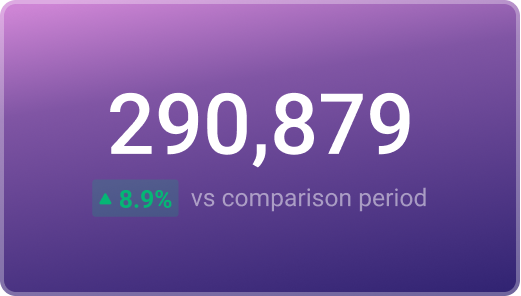Track all of your key business metrics from one screen
GET STARTED
 Xero
Draft Invoices
Xero
Draft Invoices The Draft Invoices metric in Xero refers to the number of invoices that have been created but not yet finalized. It measures the efficiency of the invoicing process and helps ensure that all invoices are accurately and promptly sent to clients for payment.
With Databox you can track all your metrics from various data sources in one place.

Used to show a simple Metric or to draw attention to one key number.
Databox is a business analytics software that allows you to track and visualize your most important metrics from any data source in one centralized platform.
To track Draft Invoices using Databox, follow these steps:
 Goals
Goals Scorecards
Scorecards Metric Digest
Metric Digest Metric Builder
Metric Builder Data Calculations
Data Calculations Performance Screen
Performance Screen